The world is home to an incredible diversity of animal life, with an estimated 8.7 million species on Earth. However, many of these animals are now facing the threat of extinction.
One of the biggest threats to animal populations is habitat loss. As human populations continue to grow and expand, we are encroaching on more and more of the natural world. This is destroying the habitats that animals rely on for food, shelter, and breeding.
Another major threat to animals is poaching. Poachers kill animals for their meat, fur, and other body parts.
This can have a devastating impact on animal populations, especially when it comes to slow-growing species.
Climate change is also a major threat to animals. As the planet warms, animals are struggling to adapt to the changing conditions. This is leading to habitat loss, range shifts, and increased competition for resources.
Other threats to animals include pollution, invasive species, and disease. All of these factors are contributing to the decline of many animal populations around the world.
The loss of animal life has a number of negative consequences. Animals play an important role in ecosystems, and their loss can disrupt food chains and damage the environment. Animals also provide a number of benefits to humans, such as food, medicine, and recreation.
The International Union for Conservation of Nature (IUCN) Red List of Threatened Species lists over 41,000 species as threatened or endangered.
Here is the list of top 10 endangered animals according to the World Wildlife Fund:
- Javan Rhinos
- Amur Leopard
- Sunda Island Tiger
- Mountain Gorillas
- Tapanuli Orangutan
- Yangtze Finless Porpoise
- Black Rhinos
- African Forest Elephant
- Sumatran Orangutan
- Hawksbill Turtles
The World Wildlife Fund mentions Javan Rhinos as the most endangered animal species with a population of just 75 individuals.
1. Javan Rhinos
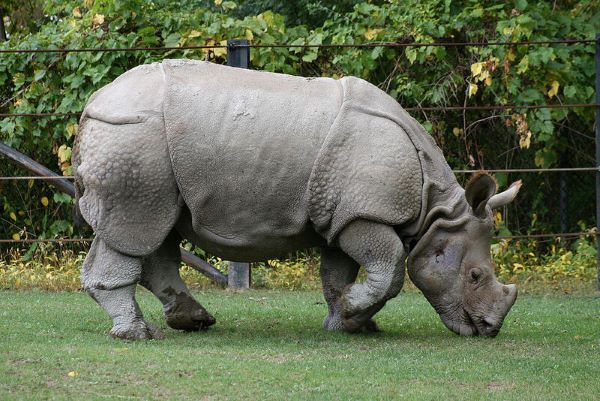
Source: Earth.Org
Once widespread in Southeast Asia, the Javan rhinoceros has suffered a dramatic decline due to hunting and habitat loss.
The only remaining wild population of Javan rhinoceros is critically endangered, with only around 75 individuals living in Ujung Kulon National Park on the island of Java, Indonesia.
Ujung Kulon National Park is a World Heritage Site, but it is also threatened by the invasive Arenga palm, which reduces the amount of food and habitat available to the rhinos.
The small population is also vulnerable to extinction due to natural disasters, diseases, poaching, and potential inbreeding.
2. Amur Leopard
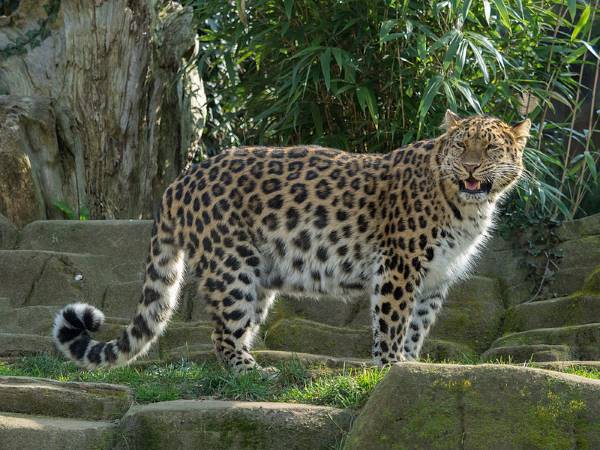
Source: Wikipedia
The Amur leopard is a critically endangered species of big cat native to the Russian Far East and northeastern China. Between 2014 and 2015, only around 92 individuals were left in their natural range. This number is now estimated to be around 84.
Amur leopards are threatened by a number of factors, including:
Poaching: Amur leopards are poached for their fur and bones, which are used in traditional Asian medicine.
Habitat loss: Amur leopard habitat is being lost due to natural and man-made fires, as well as logging and development.
Climate change: Climate change is leading to a decrease in prey availability for Amur leopards, as well as changes in their habitat.
3. Sunda Island Tiger
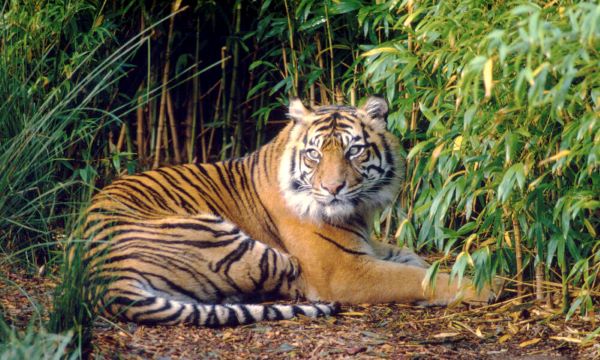
Source: World Wildlife Fund
The Sunda Island tiger, or Sumatran tiger, is the smallest tiger subspecies in the world, weighing up to 140kg. They are also the rarest tiger subspecies, with only around 600 individuals remaining in the wild.
These tigers are found only on the Indonesian island of Sumatra, where their numbers have been shrinking in recent decades due to habitat loss and poaching.
The human population of Southeast Asia has nearly doubled since the 1980s, and this has had a devastating impact on tiger habitats.
As humans expand their territory, they are encroaching on the forests and jungles that tigers rely on for survival.
This is leading to habitat loss and fragmentation, which is making it difficult for tigers to find food and mates.
Poaching is another major threat to Sumatran tigers. Poachers kill tigers for their fur, bones, and other body parts, which are sold on the black market.
Tiger parts are used in traditional Asian medicine and other cultural practices, and they fetch high prices.
4. Mountain Gorillas
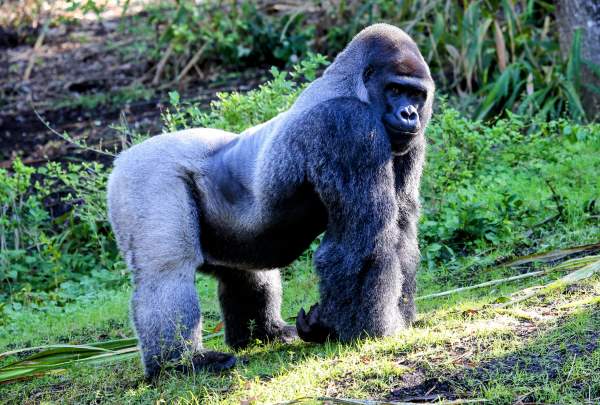
Source: Earth.com
The mountain gorilla is a critically endangered species, with only around 1,000 individuals remaining in the wild. They face a number of threats, including poaching, habitat loss, and disease.
Mountain gorillas live in two isolated populations in the high-altitude forests of the Democratic Republic of Congo, Rwanda, and Uganda. This region has a history of political instability and poverty, which has led to people moving into areas closer to the gorillas for food, shelter, and space.
Conservation efforts are underway to protect mountain gorillas, and the population is making a slow recovery. However, there are still a number of threats facing these amazing creatures.
5. Tapanuli Orangutan
Source: IUCN
The Tapanuli orangutan is the newest and rarest great ape species on Earth, with only around 800 individuals remaining in the wild.
These tree-dwelling primates are found in a single, isolated population in the Batang Toru ecosystem on the island of Sumatra, Indonesia.
The Tapanuli orangutan is critically endangered due to habitat loss, poaching, and other human threats.
Over 40% of the forests in the province of North Sumatra, where the Tapanuli orangutan is found, were lost between 1985 and 2007. This is due to deforestation for agriculture, mining, and hydroelectric and geothermal development.
Poaching is another major threat to the Tapanuli orangutan. Poachers kill orangutans for their meat, fur, and bones, which are used in traditional Asian medicine. Orangutans are also sometimes captured and sold as pets.
6. Yangtze Finless Porpoise
Source: Yicai Global
The Yangtze finless porpoise is a critically endangered species of freshwater porpoise found only in the Yangtze River in China. It is the only living freshwater porpoise in the world.
The Yangtze finless porpoise is threatened by a number of factors, including:
Fishing: Even though finless porpoises are not directly targeted by fishermen, large numbers of them die each year after becoming accidentally entangled in fishing gear.
Boat and ship strikes: The Yangtze River is a busy waterway, and finless porpoises are often injured or killed by boats and ships.
Water pollution: The Yangtze River is highly polluted, and this pollution is having a negative impact on the health of finless porpoises.
There are only between 1,000 and 1,800 finless porpoises left in the wild, and their population is declining at an annual rate of 13%.
This means that the species is expected to become extinct within 10 years if no effective conservation actions are taken.
The Chinese government has taken some steps to protect the Yangtze finless porpoise, including upgrading the species to 'first level protected species' in 2021.
7. Black Rhinos
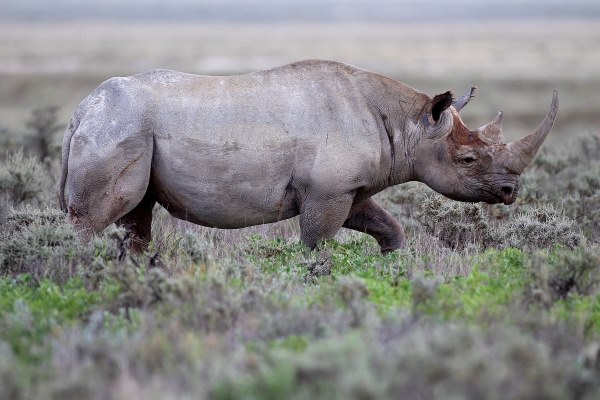
Source: Wikipedia
Black rhinos were once widespread across Africa, but their populations suffered a dramatic decline in the late 20th century due to large-scale poaching. By 1995, only around 2% of black rhinos survived.
However, thanks to rhino conservation efforts, black rhino numbers have more than doubled across Africa since the 1990s. Today, there are around 5,630 black rhinos in the wild, but they are still listed as critically endangered by the IUCN.
The biggest threat to black rhinos is still poaching for their horn. In the last 10 years, almost 10,000 African rhinos have been killed to supply the illegal rhino horn trade.
Rhino horn is used in traditional Chinese medicine, even though there is no scientific evidence that it has any medicinal properties.
Black rhinos are also threatened by habitat loss and fragmentation, as well as climate change. As human populations grow and expand, they are encroaching on the grasslands and woodlands that black rhinos rely on for survival.
Climate change is also leading to more extreme weather events, such as droughts and floods, which can make it difficult for black rhinos to find food and water.
8. African Forest Elephant
Source: Saving The Survivors
The African forest elephant is one of the most elusive and endangered animals in the world. They are found in the dense, humid forests of West and Central Africa, and their shy nature makes it difficult to get an accurate count of their population.
However, we do know that they are critically endangered, and their numbers have declined by an estimated 86% over the past 31 years.
Poaching is the main reason for the decline of the African forest elephant. Poachers kill elephants for their ivory tusks, which are sold on the black market.
Habitat loss and land-use changes for agriculture and other land uses have also contributed to the decline of this species. These factors have resulted in fragmented habitats and increasing human-elephant conflict.
Today, African forest elephants occupy around 25% of their historic range, scattered among 20 different African nations, mostly in Gabon and the Republic of Congo.
9. Sumatran Orangutan
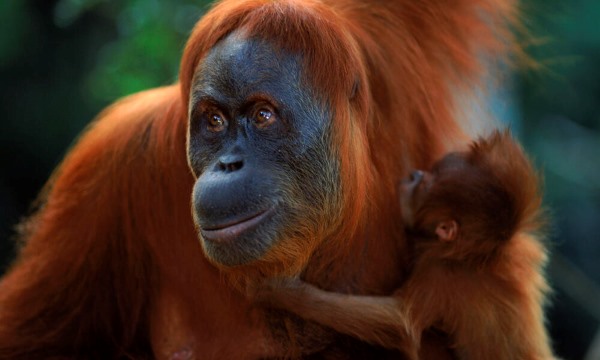
Source: World Wildlife Fund
Orangutans are one of the most intelligent and charismatic animals on Earth. They are also one of the most endangered.
The two species of orangutans, the Bornean orangutan and the Sumatran orangutan, have both experienced sharp population declines in recent decades.
A century ago, there were probably more than 230,000 orangutans in total. However, today the Bornean orangutan population is estimated at around 104,700, and the Sumatran orangutan population is estimated at around 13,846.
The main threat to orangutans is habitat loss due to deforestation. Orangutans need large tracts of forest to survive, but deforestation for palm oil plantations, logging, and agricultural plantations has destroyed much of their habitat.
Orangutans are also threatened by the illicit pet trade. Baby orangutans are sometimes captured and sold as pets, which can lead to their deaths.
10. Hawksbill Turtles
Source: Australian Museum
The hawksbill turtle is a critically endangered marine turtle that is found in tropical and subtropical waters around the world.
Their numbers have declined by at least 80% in the last 30 years due to a variety of threats, including accidental capture in fishing gear, habitat destruction, and the illegal trade of hawksbill shells and products.
Hawksbill turtles are known for their beautiful shells, which are often used to make jewellery and other souvenirs.
However, the hawksbill shell trade is illegal in most countries, as it is a major threat to the species.
Other threats to hawksbill turtles include plastic pollution, climate change, and rising sea levels. Plastic pollution can entangle and kill turtles, and climate change is causing sea levels to rise, which is flooding nesting beaches.




Comments
All Comments (0)
Join the conversation